Key Takeaways
- Colorful hiking gear enhances visibility and safety on trails
- Bright colors can boost mood and energy during outdoor activities
- Vibrant gear helps create memorable photos and experiences
- Color coordination in hiking outfits expresses personal style
- Certain hues blend well with natural surroundings for different effects
- Layering colorful pieces allows for versatile and functional outfits
- Reflective and fluorescent elements add extra safety features
- Choosing colors based on season and environment optimizes performance
The great outdoors beckons, and your hiking gear is about to get a vibrant makeover. Gone are the days when earth tones and muted shades dominated the trails. Today’s hikers are embracing a kaleidoscope of colors, turning mountainsides and forest paths into impromptu fashion runways.
But this trend isn’t just about looking good – it’s a perfect blend of style, safety, and self-expression that’s revolutionizing the way we approach outdoor adventures.
From neon jackets that pop against misty backdrops to multi-hued backpacks that stand out in crowded campsites, colorful hiking gear is making waves in the outdoor community. Let’s dive into this chromatic revolution and discover how a splash of color can transform your hiking experience from ordinary to extraordinary.
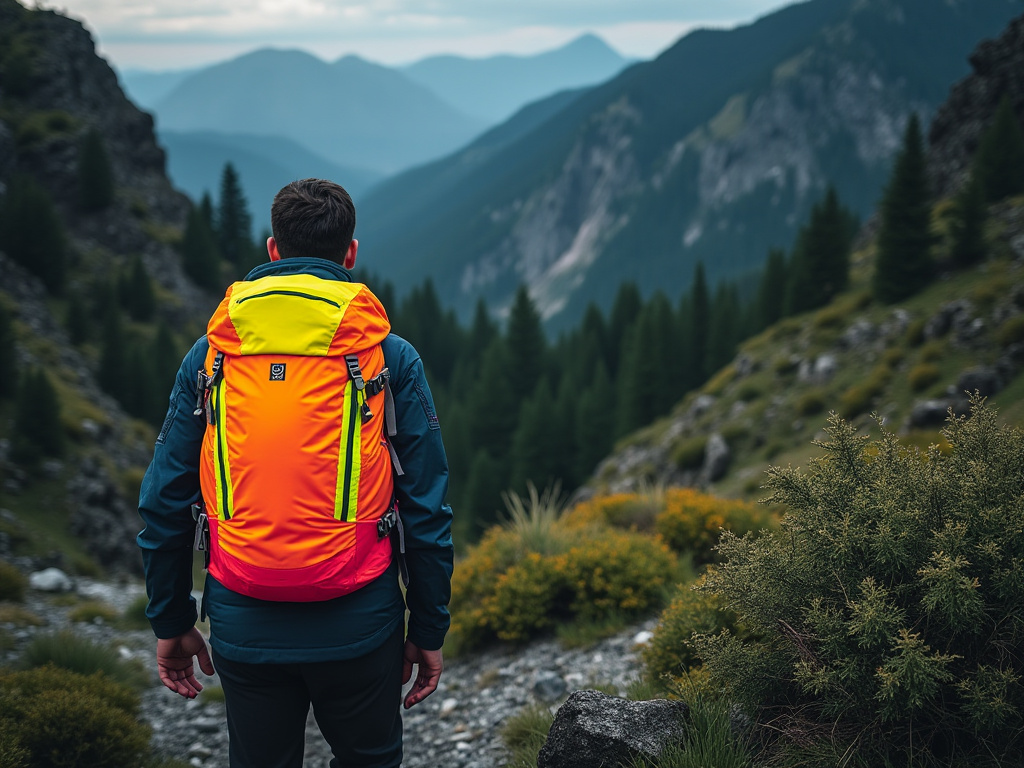
The Psychology of Color in Outdoor Gear
When it comes to hiking, the gear you choose can make or break your experience. But have you ever considered how the colors of your equipment might affect your mood, energy levels, and overall enjoyment of the great outdoors? The psychology of color plays a significant role in our perception and interaction with the world around us, and this extends to our hiking adventures as well.
Mood-Boosting Hues for Happy Trails
Imagine setting out on a challenging hike, your spirits instantly lifted by the cheerful yellow of your backpack or the energizing red of your hiking boots. These aren’t just random color choices – they’re strategic picks that can significantly impact your mental state on the trail. Warm colors like oranges and yellows are known to promote feelings of happiness and optimism, perfect for those long uphill stretches when you need a little extra motivation. Cool blues and greens, on the other hand, can have a calming effect, ideal for creating a sense of serenity during rest stops or when taking in breathtaking vistas.
Energy-Enhancing Tones for Peak Performance
But the influence of color doesn’t stop at mood – it can also affect your physical performance. Studies have shown that certain colors can stimulate the body and mind, potentially giving you that extra boost when you need it most.
Bright, vibrant colors like electric blue or neon green can increase alertness and focus, helping you navigate tricky terrain with precision. Red, often associated with power and strength, might just be the color you need on your hydration pack to push through those last few miles of a grueling hike.
Nature-Inspired Palettes for Harmony on the Trail
While bold colors have their place, there’s also something to be said for choosing hues that harmonize with the natural environment. Earth tones and muted shades can help you feel more connected to nature, fostering a sense of peace and belonging as you traverse the wilderness.
A backpack in forest green or a jacket in warm brown can blend seamlessly with your surroundings, allowing you to feel like a part of the landscape rather than an intruder. This connection to nature can enhance your overall hiking experience, making each step feel more meaningful and grounded.
Safety First: Visibility on the Trails
When venturing into the great outdoors, safety should always be your top priority. While proper preparation and navigation skills are crucial, the colors you wear can play a surprisingly significant role in keeping you safe on the trails. Let’s explore how vibrant hues can be your best ally in the wilderness.
High-Visibility Colors for Search and Rescue
In the unfortunate event that you find yourself in need of assistance, being easily spotted can make all the difference. Bright, fluorescent colors like neon yellow, orange, and pink are highly visible from great distances and in various lighting conditions. These attention-grabbing shades stand out starkly against natural backgrounds, making it easier for search and rescue teams to locate you quickly. A vibrant rain jacket or backpack cover in these hues could be the beacon that guides help your way in an emergency.
Contrasting Colors for Group Visibility
Hiking in a group? Coordinating your gear colors can help you keep track of each other, especially in dense forests or rugged terrains. Assigning different bright colors to group members – say, a red jacket for the leader, blue for the sweep, and yellow for those in between – creates a visual system that allows for easy head counts and location checks. This simple color-coding can prevent separation and ensure that no one gets left behind on the trail.
Reflective Elements for Low-Light Conditions
While daytime visibility is important, don’t forget about those early morning starts or late evening returns. Incorporating reflective elements into your hiking gear adds an extra layer of safety when natural light is scarce. Many modern hiking boots, jackets, and backpacks come with reflective strips or patches that light up like beacons when hit by headlamps or flashlights. These reflective details can make you visible from hundreds of feet away, providing crucial visibility during twilight hours or in case of unexpected delays on the trail.
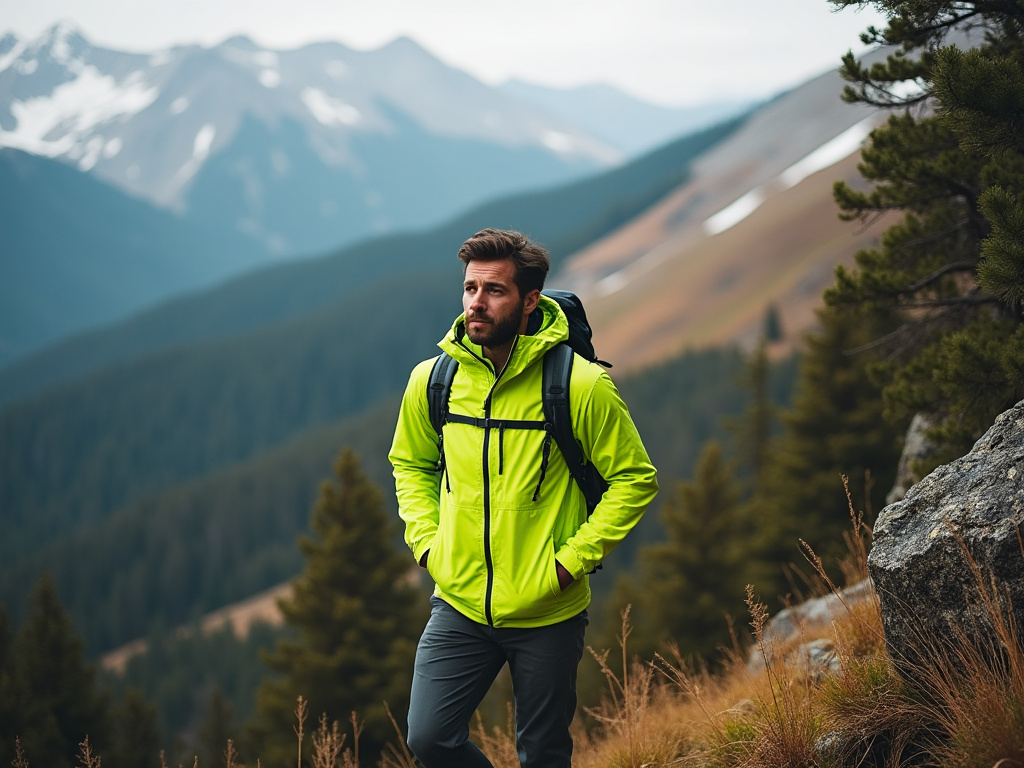
Expressing Your Style on the Mountain
Who says fashion has to stay in the city? The trails are your runway, and your hiking gear is the perfect canvas for self-expression. Gone are the days when outdoor enthusiasts were limited to a handful of practical but uninspiring color options. Today, the world of hiking gear is a vibrant playground where style meets functionality, allowing you to showcase your personality while conquering peaks and traversing valleys.
Hikers are increasingly using their gear choices to make bold statements about who they are and what they love. It’s not uncommon to see entire hiking outfits color-coordinated to perfection, or unique color combinations that reflect personal tastes and preferences. This trend towards expressive hiking wear isn’t just about looking good – it’s about feeling good and bringing a sense of individuality to the great outdoors.
The beauty of colorful hiking gear lies in its versatility. Whether you prefer a monochromatic look with various shades of your favorite color or love to mix and match contrasting hues, there’s no limit to the creative possibilities. Some hikers opt for gear that complements the natural surroundings, choosing earthy tones or forest-inspired palettes. Others go for bold, eye-catching colors that stand out against the backdrop of nature, creating striking visual contrasts that are as memorable as the hikes themselves.
- Vibrant backpacks that double as conversation starters
- Colorful hiking boots that leave a lasting impression on the trail
- Bright, moisture-wicking shirts that combine style with functionality
- Multi-hued water bottles that add a pop of personality to your gear
- Patterned gaiters that protect your legs while making a fashion statement
- Cheerful bandanas or neck gaiters that serve both practical and aesthetic purposes
- Colorful trekking poles that brighten up even the toughest ascents
- Vivid rain jackets that turn dreary weather into a style opportunity
- Eye-catching hats or caps that shield you from the sun with flair
- Brightly colored stuff sacks to organize your gear in style
- Funky patterned socks that peek out from your hiking boots
- Vibrant tent options that make your campsite stand out
- Colorful carabiners and gear loops for both function and fashion
- Uniquely hued hiking pants or shorts that break away from traditional khaki
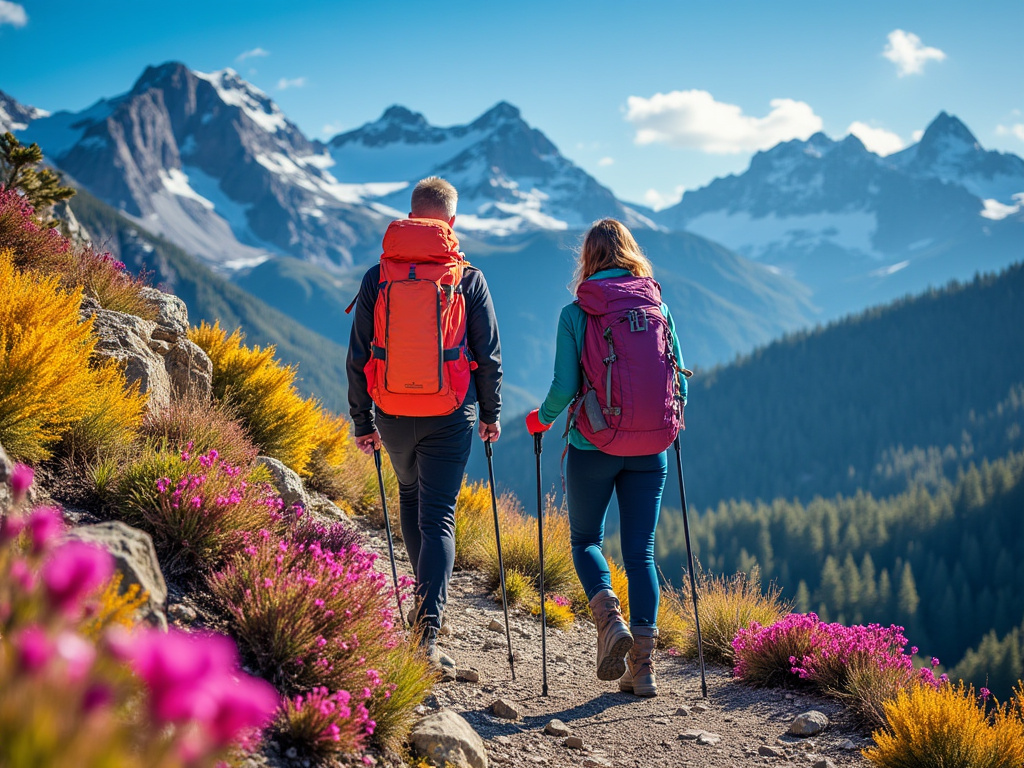
The Impact of Color on Outdoor Photography
In the age of Instagram and social media, capturing stunning photos of your outdoor adventures has become an integral part of the hiking experience. The colors you choose for your hiking gear can play a crucial role in creating memorable and visually striking images that do justice to the beauty of your surroundings. Let’s explore how the right color choices can elevate your outdoor photography game and help you create a visual narrative that’s as compelling as the journey itself.
First and foremost, vibrant colors in your hiking gear can serve as fantastic focal points in photographs. A bright red jacket against a backdrop of snow-capped mountains or a neon yellow backpack peeking out from dense green foliage can draw the eye and add depth to your composition. These pops of color create visual interest, breaking up the monotony of natural landscapes and adding a human element that tells a story.
Contrasting colors can also be used to great effect in outdoor photography. Imagine a hiker in a deep purple jacket standing at the edge of a golden meadow at sunset – the complementary colors create a striking image that’s sure to catch attention. By strategically choosing gear colors that contrast with your expected surroundings, you can create photos that are not only beautiful but also visually dynamic.
Color can also be used to convey mood and atmosphere in your hiking photos. Cool blues and greens can enhance the serene feeling of a misty forest trail, while warm oranges and reds can amplify the drama of a desert landscape. By aligning your gear colors with the emotional tone you want to convey, you can create images that resonate on a deeper level with viewers.
Don’t underestimate the power of color coordination in group shots. Coordinated but not matching colors among hiking companions can create visually pleasing compositions that look intentional and well-thought-out. This doesn’t mean everyone needs to wear the same color – rather, choosing a complementary color palette can tie the group together visually while still allowing for individual expression.
Seasonal color considerations can also enhance your outdoor photography. Bright, bold colors can pop against the muted tones of autumn foliage or the stark white of a winter landscape. In spring, pastel hues can complement the soft colors of blooming wildflowers. By adapting your gear colors to the seasons, you can create photos that truly capture the essence of the time of year.
Remember that lighting conditions can dramatically affect how colors appear in photos. What looks vibrant in bright daylight might appear muted in the golden hour just before sunset. Experimenting with different colors in various lighting conditions can help you understand how to best showcase your gear and surroundings in different scenarios.
Lastly, don’t forget about the storytelling power of color in your hiking photos. A series of images featuring the same brightly colored backpack in different breathtaking locations can create a visual thread that ties your adventure narrative together. This consistent element can make your photo series more cohesive and engaging, inviting viewers to follow along on your journey.
By thoughtfully incorporating color into your hiking gear choices, you’re not just preparing for a trek – you’re setting the stage for capturing unforgettable moments. Whether you’re an amateur photographer or a seasoned pro, the right colors can transform your outdoor photos from simple snapshots to works of art that truly capture the spirit of your adventures.
Seasonal Color Trends in Hiking Apparel
As the seasons change, so do the color palettes that dominate hiking apparel. Staying attuned to these seasonal shifts not only keeps your outdoor wardrobe fresh and exciting but also allows you to harmonize with the ever-changing natural environment. Let’s take a journey through the year and explore how color trends in hiking gear evolve with each season, offering both practical benefits and aesthetic appeal.
Spring’s Pastel Promise
When spring arrives, the hiking world bursts into a symphony of soft, refreshing hues. Pastel colors take center stage, mirroring the gentle awakening of nature. Light pinks, soft lavenders, and mint greens become popular choices for lightweight jackets and breathable base layers. These colors not only complement the blooming wildflowers and budding trees but also provide a sense of renewal and fresh starts – perfect for shaking off the winter blues and embracing new adventures.
Summer’s Vibrant Vitality
As temperatures rise and the days grow longer, summer brings with it a palette of bright, energetic colors. Bold blues reminiscent of clear skies, vibrant yellows that echo the warm sunshine, and electric greens that match the lush foliage become favorites among hikers. These vivid hues not only stand out beautifully against summer landscapes but also serve practical purposes. Bright colors can help reflect sunlight, keeping you cooler on those scorching summer trails, while also enhancing visibility during sudden summer storms.
Autumn’s Earthy Embrace
Fall ushers in a dramatic shift in nature’s color scheme, and hiking apparel follows suit. Rich, warm tones like deep oranges, burgundies, and golden yellows dominate the autumn hiking wardrobe. These colors not only blend beautifully with the changing foliage but also provide a cozy, comforting feel as temperatures begin to drop. Earth tones like olive green and warm brown become increasingly popular, allowing hikers to feel more connected to the transforming landscape around them.

Practical Considerations for Colorful Gear
While the aesthetic appeal of colorful hiking gear is undeniable, practical considerations must also be taken into account when selecting your outdoor wardrobe. The right balance of style and functionality can enhance your hiking experience, ensuring you’re prepared for whatever the trail throws your way.
Durability and Color Retention
One of the primary concerns with vibrant hiking gear is how well it maintains its color over time. High-quality, durable materials are essential for preserving the vibrancy of your colorful equipment. Look for gear made with fade-resistant fabrics that can withstand exposure to sunlight, rain, and regular washing.
Some manufacturers use special dyeing techniques or incorporate UV-resistant properties into their materials to ensure long-lasting color. Remember, a faded neon jacket won’t provide the same visibility benefits as a bright one, so investing in gear that retains its color is not just about looks – it’s about safety too.
[ Maelstrom Hiking Backpack,40L (Waterproof) ]
[ Charles River Pack-n-go Wind & Water-resistant Pullover ]
Camouflage vs. Visibility: Finding the Right Balance
While bright colors are excellent for visibility and safety, there are times when blending in with your surroundings might be preferable. For wildlife photographers or birdwatchers, muted earth tones can help you observe nature without disturbing it. Consider the primary purpose of your hikes and choose colors accordingly.
A good strategy is to have a mix of both vibrant and subdued pieces in your hiking wardrobe. This allows you to layer strategically, wearing earth tones close to your body and brighter colors on the outside for quick removal if needed.
Climate and Environment Considerations
The colors you choose can impact your comfort in different climates and environments. In hot, sunny conditions, lighter colors reflect more sunlight, helping to keep you cool.
Conversely, darker colors absorb more heat, which can be beneficial in colder climates. Consider the typical weather and terrain of your hiking destinations when selecting gear colors. For instance, if you frequently hike in areas prone to sudden weather changes, opt for gear in colors that are visible in both clear and overcast conditions.
Innovative Color Technologies in Outdoor Wear
The world of hiking gear is constantly evolving, and color technology is no exception. Innovative approaches to color in outdoor wear are not only enhancing the visual appeal of hiking gear but also improving its functionality and performance. Let’s explore some of the cutting-edge color technologies that are changing the game for outdoor enthusiasts.
Thermochromic Fabrics: Colors that Adapt
Imagine a jacket that changes color as the temperature fluctuates – that’s the magic of thermochromic technology. These innovative fabrics contain special dyes that react to temperature changes, shifting hues as you heat up or cool down.
For hikers, this means gear that can visually indicate when you might be overheating or need an extra layer. A shirt that gradually turns from blue to purple as your body temperature rises can serve as a visual cue to take a break or hydrate. This technology not only adds a fun, interactive element to your gear but also contributes to safety and comfort on the trail.
Photochromic Materials: Responsive to Light
Similar to thermochromic fabrics, photochromic materials change color in response to light exposure. This technology is particularly useful for eyewear and visors, where lenses can automatically darken in bright sunlight and lighten in shade or cloudy conditions. For hikers, this means consistent visibility and eye protection without the need to switch between different pairs of sunglasses.
Some innovative companies are even incorporating photochromic technology into clothing, creating jackets or shirts that subtly change shade to provide better camouflage or visibility depending on the lighting conditions of your environment.
Bio-based Dyes: Eco-friendly Color Solutions
As sustainability becomes increasingly important in outdoor gear, manufacturers are turning to bio-based dyes as an eco-friendly alternative to traditional synthetic colorants. These natural dyes, derived from plants, minerals, and other organic sources, offer a way to add color to hiking gear without harmful chemicals or excessive water usage.
While the color palette of bio-based dyes might be more limited than their synthetic counterparts, they offer unique, subtle hues that resonate with nature-loving hikers. Moreover, gear colored with these dyes often tells a story – imagine wearing a backpack dyed with extracts from the very plants you might encounter on your hikes.
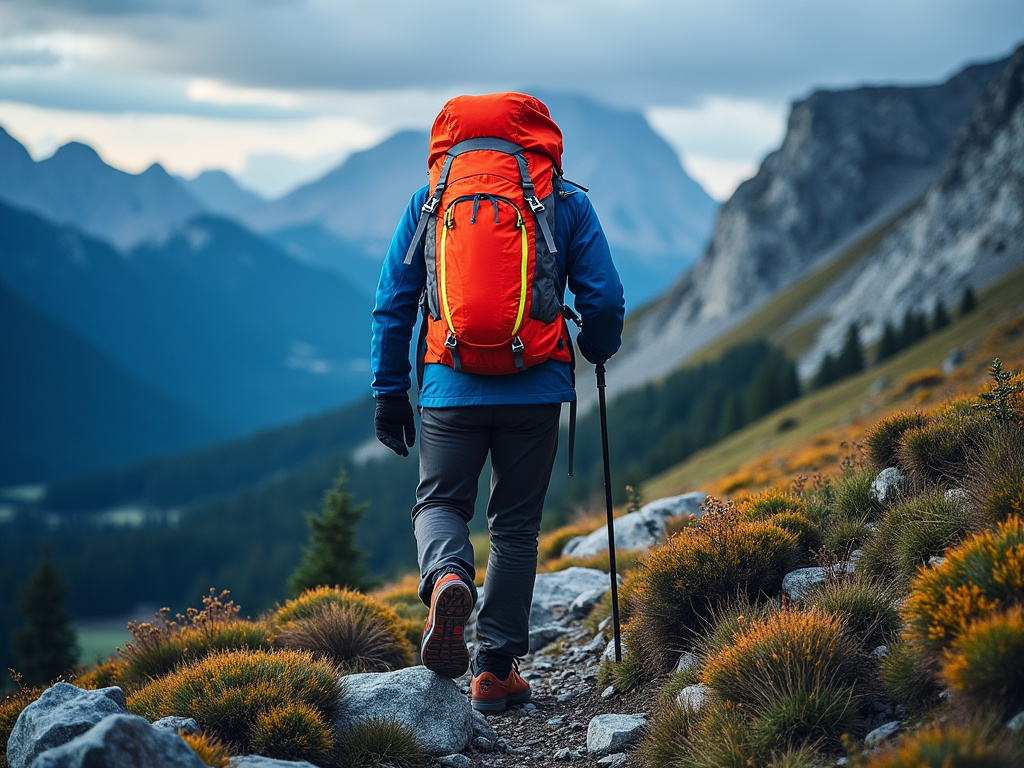
Color Coordination for Layered Hiking Outfits
Mastering the art of layering is essential for any serious hiker, allowing you to adapt to changing weather conditions and activity levels. But layering doesn’t mean you have to sacrifice style for functionality. With a bit of color coordination know-how, you can create layered hiking outfits that are both practical and visually appealing.
Base Layers: The Foundation of Color
Your base layer sets the tone for your entire outfit, even if it’s not always visible. Opt for neutral or complementary colors that work well with your outer layers. A white or light gray thermal shirt, for instance, can serve as a versatile foundation that pairs well with almost any color. Alternatively, choose a base layer in a color that contrasts nicely with your mid and outer layers for an interesting peek of color when layers are partially removed.
Mid Layers: Playing with Patterns and Textures
Mid layers offer a great opportunity to introduce patterns and textures into your hiking outfit. A patterned fleece or a textured wool sweater can add visual interest while providing crucial warmth. When selecting colors for your mid layer, consider how they’ll look both on their own and when peeking out from under your outer layer. Earth tones like forest green, rust orange, or deep burgundy can create a cohesive look that blends well with natural surroundings while still offering a pop of color.
Outer Layers: Making a Statement
Your outer layer is where you can really let your color preferences shine. Bright, bold colors not only make a statement but also serve practical purposes like increased visibility. Consider the season and environment when choosing your outer layer color. A vivid blue or red jacket can stand out beautifully against snowy landscapes, while a sunny yellow or orange shell can brighten up dreary, rainy day hikes. Remember, your outer layer is often the star of your hiking photos, so choose a color that you love and that complements your other gear.
Accessorizing with Color on the Trail
While your main hiking gear pieces set the stage, accessories offer the perfect opportunity to add pops of color and personality to your outdoor ensemble. Let’s explore how you can use colorful accessories to enhance both the style and functionality of your hiking outfit.
Vibrant Headwear for Sun Protection and Style
Hats and headbands are not just practical sun protection – they’re also a great way to introduce a splash of color to your hiking look. A brightly colored sun hat can become your signature trail piece, instantly recognizable in group photos. Consider choosing headwear in a complementary or contrasting color to your main outfit. For instance, a teal beanie could add a refreshing pop against an earth-toned jacket.
Colorful Socks: Hidden Comfort and Flair
Don’t underestimate the power of a good pair of hiking socks – in both comfort and style. While they might be mostly hidden by your boots, colorful or patterned socks can add a fun surprise element to your outfit. They’re perfect for those moments when you’re relaxing at camp or crossing streams. Plus, having distinctively colored socks can make it easier to spot them in your pack or tent.
Eye-catching Gaiters for Protection and Pizzazz
Gaiters serve the important function of keeping debris out of your boots, but they can also be a standout accessory. Opt for gaiters in bright colors or bold patterns to add visual interest to your lower legs. This can be especially effective if the rest of your outfit is in more subdued tones. Plus, colorful gaiters can help your hiking companions spot you easily on narrow or overgrown trails.
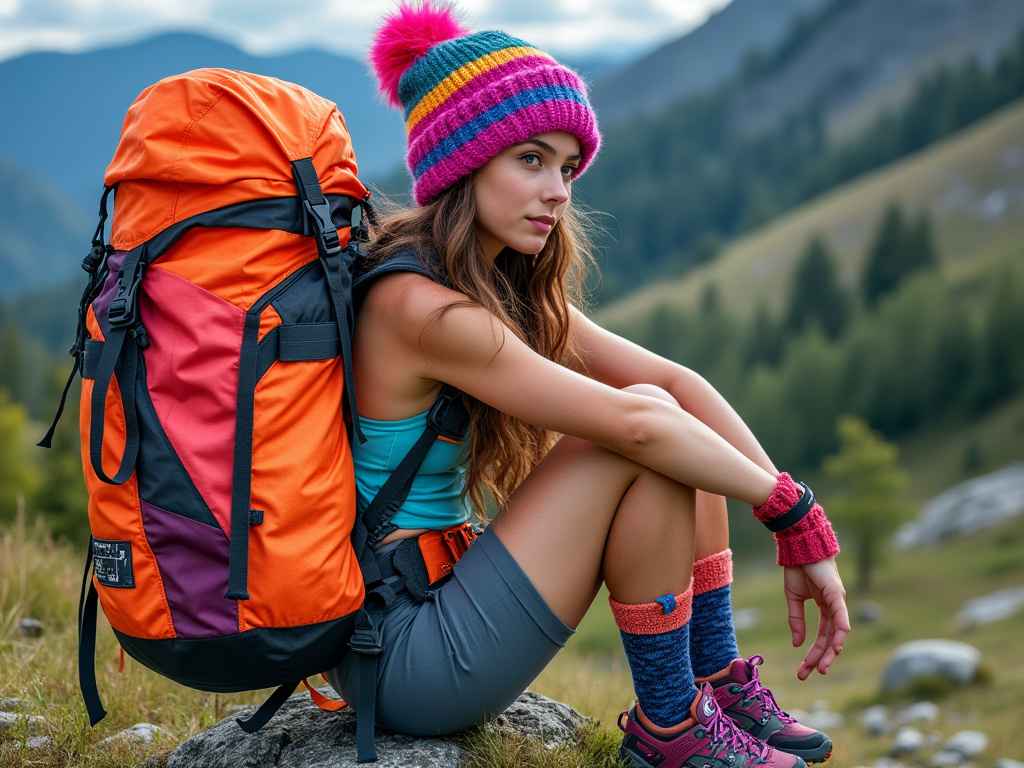
The Future of Color in Hiking Gear
As we look ahead, the future of color in hiking gear promises to be even more exciting and innovative. Advancements in textile technology and a growing emphasis on personalization are set to revolutionize how we think about and use color in our outdoor adventures.
Smart Fabrics and Dynamic Color Changes
Imagine a hiking jacket that could change color based on your body temperature, heart rate, or even your mood. While it might sound like science fiction, smart fabrics with color-changing capabilities are already in development. These technologies could lead to hiking gear that adapts its color for optimal visibility or camouflage depending on your environment, or even alerts you to potential health issues by changing hue.
Customizable Color Options
The trend towards personalization is likely to extend to hiking gear colors as well. We may soon see outdoor brands offering custom color options for their products, allowing hikers to design gear that perfectly matches their personal style or coordinates with their existing equipment. This could be achieved through advanced dyeing techniques or modular gear designs with interchangeable colored components.
Eco-Friendly Color Innovations
As sustainability continues to be a major focus in the outdoor industry, we can expect to see more eco-friendly color solutions. This might include wider adoption of natural and bio-based dyes, as well as new technologies that reduce water usage and chemical waste in the dyeing process. These innovations could lead to a new palette of colors that are not only visually appealing but also environmentally responsible.
Summary Table
| Aspect | Benefits | Considerations |
|---|---|---|
| Safety | Increased visibility, easier search and rescue | Balance with camouflage needs for wildlife viewing |
| Style | Personal expression, memorable photos | Coordinate with other gear and natural surroundings |
| Functionality | Mood enhancement, energy boost | Choose colors appropriate for climate and activity |
| Durability | Long-lasting vibrancy with quality materials | Invest in fade-resistant, UV-protected fabrics |
| Innovation | Smart fabrics, eco-friendly dyes | Stay informed about new color technologies |
Conclusion
As we’ve explored throughout this colorful journey, the world of hiking gear is no longer bound by traditional earth tones and muted hues. The infusion of vibrant colors into outdoor equipment has transformed not just how we look on the trails, but how we experience our adventures. From enhancing safety and visibility to boosting our mood and energy, colorful hiking gear has proven to be more than just a fashion statement – it’s a functional evolution in outdoor wear.
The future of color in hiking gear looks brighter than ever, with innovations in smart fabrics, customization options, and eco-friendly dye technologies on the horizon. As we continue to push the boundaries of what’s possible in outdoor equipment, one thing is clear: the trails of tomorrow will be more vibrant, more personal, and more expressive than ever before.
So the next time you gear up for a hike, remember that your color choices are more than just aesthetic decisions. They’re a reflection of your personality, a tool for your safety, and a way to connect with the vibrant world around you. Embrace the rainbow of possibilities, and let your true colors shine on every adventure that awaits.
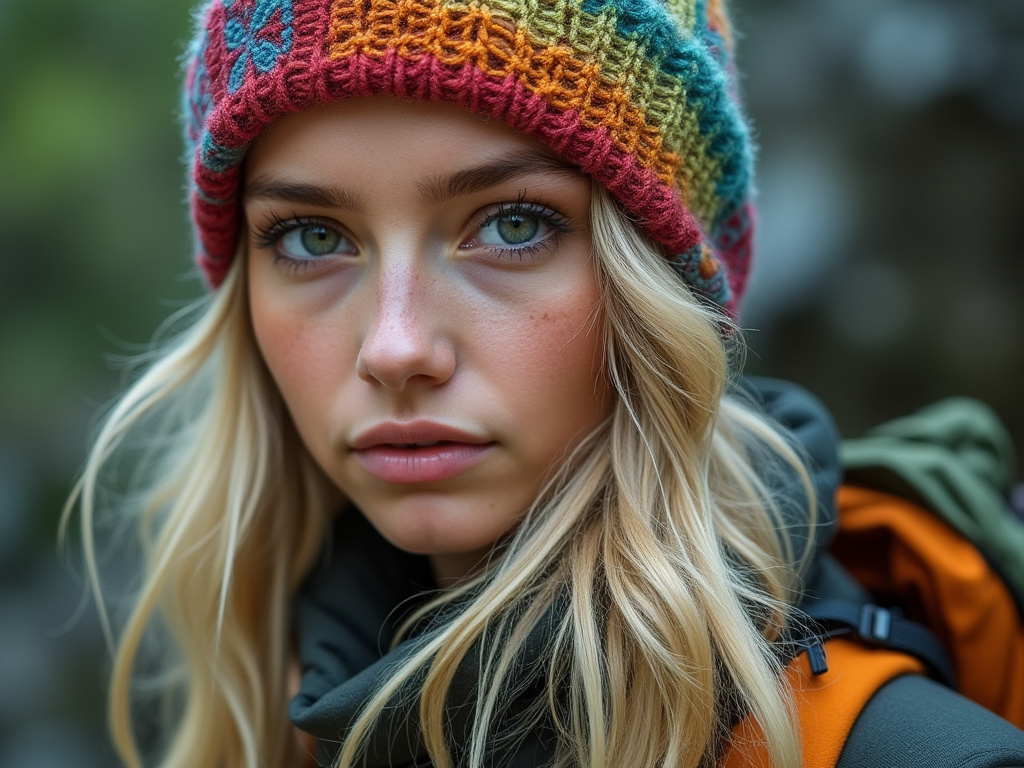
Frequently Asked Questions
How do bright colors in hiking gear affect wildlife?
Bright colors in hiking gear can potentially make wildlife more aware of human presence. While this can be beneficial for avoiding surprising animals, it might make wildlife viewing more challenging. For activities like bird watching or wildlife photography, consider having neutral-colored options available.
Are there any colors I should avoid wearing while hiking?
Generally, there’s no color you must absolutely avoid. However, during hunting seasons in certain areas, it’s wise to avoid wearing browns, tans, or white, as these could be mistaken for deer. Opt for bright, unnatural colors like blaze orange for safety during these times.
Can the color of my hiking gear really affect my mood on the trail?
Yes, color psychology suggests that different hues can influence our emotions and energy levels. Warm colors like reds and oranges can be energizing, while cool blues and greens might have a calming effect. Choose colors that align with the mood you want to cultivate during your hike.
How do I choose the best color for visibility in different environments?
For maximum visibility, choose colors that contrast with your hiking environment. In forested areas, bright oranges or reds stand out well. In snowy conditions, vibrant blues or purples are effective. For desert hikes, consider vivid greens or pinks that pop against the sandy backdrop.
Will colorful hiking gear fade faster than traditional earth-toned equipment?
Not necessarily. The durability of color depends more on the quality of the fabric and dye used rather than the color itself. Look for gear made with high-quality, fade-resistant materials and UV-protective treatments to maintain vibrancy, regardless of the color.
Is it worth investing in color-changing or smart fabric hiking gear?
While these technologies are exciting, they’re still emerging in the hiking gear market. For now, focus on high-quality, durable gear in colors you love. As smart fabrics become more widespread and affordable, they may be worth considering for their potential safety and functionality benefits.
How can I incorporate colorful gear into my existing hiking wardrobe?
Start small by adding colorful accessories like hats, gaiters, or backpack covers to your current setup. As you replace worn-out gear, consider opting for more vibrant options. Remember, you don’t need to overhaul your entire wardrobe at once – building a colorful hiking kit can be a gradual process.
Are there any cultural considerations I should be aware of when choosing colorful hiking gear for international trips?
In some cultures, certain colors may have specific meanings or associations. When hiking internationally, research local color symbolism and consider opting for neutral or universally accepted colors if you’re unsure. This can help you avoid unintentionally causing offense or drawing unwanted attention.
How do I care for and maintain the vibrancy of my colorful hiking gear?
To keep your colorful hiking gear looking vibrant, follow the care instructions on the label carefully. Generally, wash items in cold water with a gentle detergent designed for technical fabrics. Avoid using fabric softeners or bleach, as these can damage the fabric and dull colors. Air dry your gear when possible, as high heat from dryers can fade colors and damage technical materials. For stubborn stains, spot clean immediately and avoid scrubbing too harshly, which can wear down the fabric’s color. Store your gear in a cool, dry place away from direct sunlight when not in use to prevent fading.
Can colorful hiking gear help with temperature regulation?
Yes, the color of your hiking gear can play a role in temperature regulation. Lighter colors reflect more sunlight, potentially keeping you cooler in hot, sunny conditions. Darker colors absorb more heat, which can be beneficial in colder environments. However, the fabric’s material and construction often play a more significant role in temperature regulation than color alone. Look for moisture-wicking, breathable fabrics in appropriate weights for your hiking conditions, regardless of color.
Is it necessary to color-coordinate all my hiking gear?
While color coordination can create a cohesive and aesthetically pleasing look, it’s not necessary for functionality. Focus on choosing colors that make you feel confident and comfortable, and that serve practical purposes like visibility or temperature regulation. Mix and match colors as you see fit – variety can make your gear more versatile for different environments and seasons.
How can I use color to make my hiking photos more interesting?
Colorful gear can add visual interest to your hiking photos in several ways. Use bright colors to create focal points in your images – a vivid backpack or jacket can draw the eye and add depth to landscape shots. Experiment with complementary colors (those opposite each other on the color wheel) for striking contrasts. For example, a blue jacket against an orange sunset sky. Consider the seasons and choose gear colors that will pop against the natural backdrop – bright yellows in autumn, reds in snowy scenes, or purples among spring wildflowers.
Are there any safety concerns with wearing certain colors while hiking?
While bright colors generally enhance safety by increasing visibility, there are a few situations to be aware of. During hunting seasons, avoid earth tones that might be mistaken for game animals. In areas with aggressive wildlife, some experts suggest avoiding bright reds or yellows, which might attract attention (though evidence for this is largely anecdotal). In any potentially dangerous area, prioritize visibility and opt for colors that contrast with the environment for easier spotting in case of emergencies.
How do I choose colors for group hikes or outdoor events?
For group hikes or events, consider using color to create a cohesive look while still allowing for individual expression. You might choose a specific color palette and let participants select their preferred shade within that range. Alternatively, designate certain colors for specific roles (e.g., red for leaders, blue for sweeps). This can help with organization and create great group photos. Just be sure to balance coordination with the need for individual visibility in case of emergencies.
Can the color of my hiking gear affect my performance on the trail?
While the direct impact of color on physical performance is debatable, there’s evidence that colors can influence our psychological state, which in turn can affect performance. Reds and oranges are often associated with energy and might provide a psychological boost during challenging sections. Blues and greens can have a calming effect, potentially helpful during long, monotonous stretches. Ultimately, choose colors that make you feel confident and motivated – your mental state can significantly impact your hiking performance.
How do I balance fashion trends with practicality when choosing colorful hiking gear?
While it’s fun to stay current with fashion trends, prioritize functionality and durability when selecting hiking gear. Look for colors and styles that you’ll be happy with for several seasons, as quality hiking gear often lasts for years.
Consider incorporating trendy colors through smaller, less expensive items like hats, buffs, or trekking pole straps. This allows you to refresh your look without compromising on the performance of your core gear pieces. Remember, in the outdoors, your comfort and safety should always come before fashion.

Anna West, the visionary behind Clothes Color Guide, is our go-to for all things fashion. Merging the finest of runway trends with everyday style, she demystifies the world of color and pattern. While clothing is her mainstay, Anna also shares insights on interior design, pet care, and relationship advice. Dive into her articles and emerge with a vibrant perspective on style and life.
Reviewed By: Joanna Perez and Marcella Raskin
Edited By: Lenny Terra
Fact Checked By: Sam Goldman
Photos Taken or Curated By: Matthew Mansour
